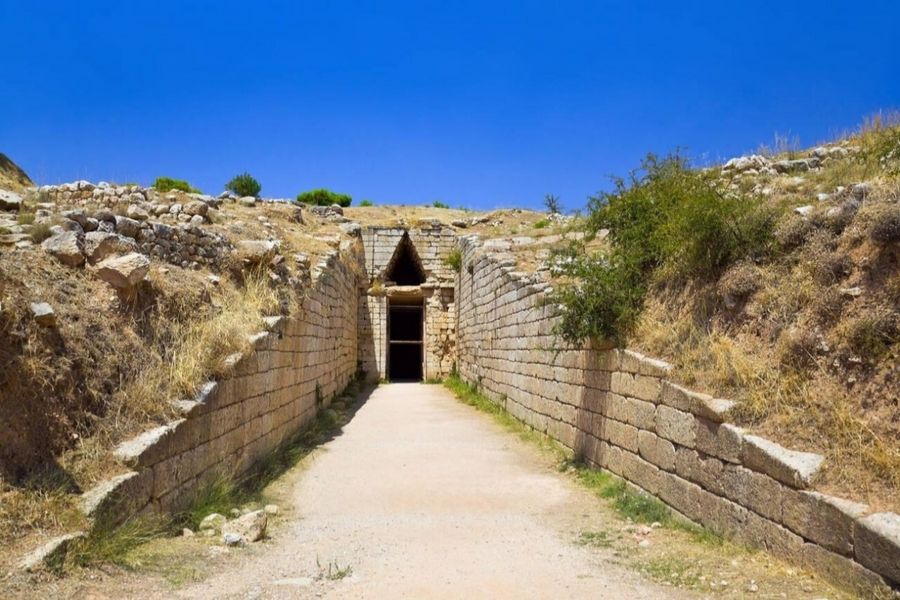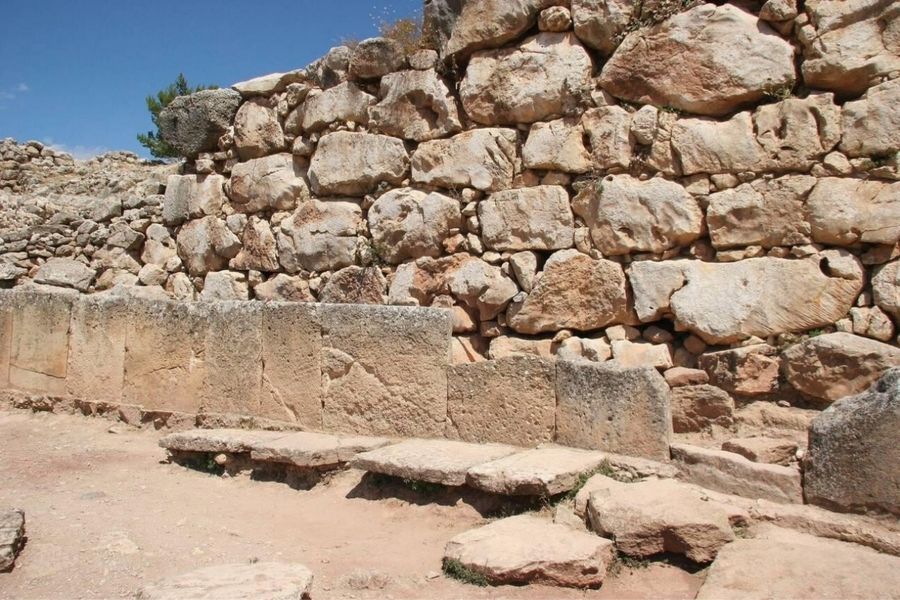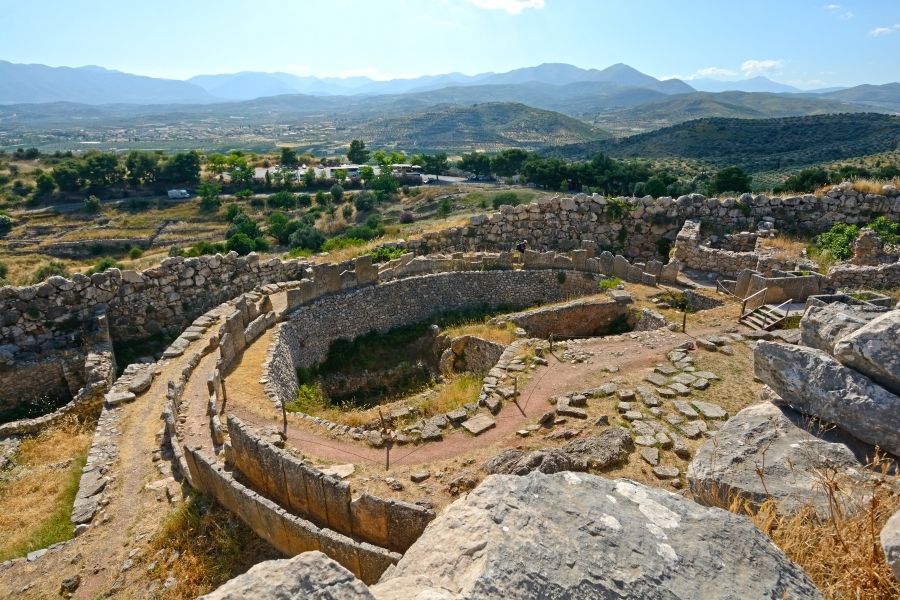When I walked through the narrow passage toward the Treasury of Atreus near Mycenae, it honestly felt like time just slipped away. This massive beehive-shaped tomb, built somewhere between 1300 and 1250 BCE, still stands as one of the most jaw-dropping structures from ancient Greece.
Despite the popular name, it’s not a treasury at all but a tholos tomb—the largest and most imposing of the nine such tombs around Mycenae.
The second I stepped into the cool, shadowy interior, its sheer size just floored me. The dome rises more than 40 feet, and somehow, the space feels both cozy and impossibly grand at the same time.
Archaeologists call it the Treasury of Atreus, but some folks know it as the Tomb of Agamemnon—a fanciful title tying it to the legendary king from Homer’s stories.

What really gets me about this place is how well it’s held up after more than 3,000 years. Standing inside, I couldn’t help but imagine the Mycenaeans who built it, their presence almost echoing through the stone.
The engineering needed to pull off such a perfect dome without modern tools is just mind-blowing. If you’re heading to Mycenae, this underground marvel absolutely deserves a spot at the top of your list.
The Allure of the Treasury of Atreus
When I stood before this massive underground structure, I felt drawn right into its ancient mystery and architectural brilliance.
The Treasury of Atreus represents a peak achievement for the Mycenaeans, blending wild engineering skills with deep religious meaning.
A Window into Mycenaean Civilization
This tomb gives us a rare peek into the sophisticated world of Mycenaean culture. Built between 1300 and 1250 BCE, its beehive shape shows off the builders’ remarkable skills.
I couldn’t stop staring at the precision of the stonework. Massive blocks fit together so tightly that, even after 3,300 years, many sections still hold up without a drop of mortar.
The dome’s height is impressive, and the space somehow manages to feel both close and monumental.

Walking that long entrance passage, I felt like I’d slipped into a time when Mycenae ruled as a powerhouse, shaping trade across the Mediterranean. Unlike the grand ruins in Athens, this place predates classical Greece by nearly a thousand years.
Origins of the Tholos Tomb
The tholos, or beehive tomb, stands out as a uniquely Mycenaean idea. Builders carved these structures into hillsides, with a long dromos leading to a circular chamber.
When I finally entered the main chamber, the flawless dome above just pulled my gaze upward. The builders stacked smaller and smaller stone rings, each one overhanging the last, until the dome narrowed to a single point.
This style feels worlds apart from what I’ve seen in Macedonia or later Greek-influenced regions. The builders clearly understood weight and compression, creating a self-supporting dome that’s survived earthquakes and centuries.
Legends and Historical Associations
Even though people call it the “Treasury of Atreus,” it wasn’t actually a treasury, and no one has ever proved a link to King Atreus from mythology. Some connect it to Agamemnon, the legendary king who led the Greeks at Troy.
I found myself picturing grand funeral processions moving through this passage. The tomb’s sheer scale suggests it was meant for someone truly important in Mycenaean society.
This place actually predates many of the myths later tied to it, including those about Oedipus and the cursed house of Atreus. Standing in the darkness, I felt the line between history and legend blur in the coolest way.
Architectural Feats and Mysteries
The Treasury of Atreus stands as one of the greatest architectural feats from the Mycenaean era. Its construction shows off engineering skills that have kept this giant tomb standing for more than 3,200 years.
Design of the Tholos Structure
The Treasury sticks to the classic tholos (beehive) tomb design that Mycenaeans favored for burials. I walked through the dromos, cut right into the hillside, and couldn’t help but marvel at how perfectly the enormous stones fit—no mortar, just precision.
Inside, the main chamber is a circle, with walls curving in to form a dome that reaches about 13 meters (43 feet) at its highest.
The corbelled vault technique blew my mind. Each stone layer juts a bit inward from the one beneath, creating that beehive effect. The stones weren’t just stacked—they followed careful mathematical proportions to handle the weight.

A smaller side chamber branches off the main space, probably for extra burials or offerings. Even with its Roman-sounding name, this place was built centuries before Rome ever existed, around 1250 BCE.
Engineering Challenges and Solutions
The engineers who tackled this tomb had some serious hurdles. The lintel stone above the entrance weighs about 120 tons! How did they quarry, move, and position such monsters? That part still puzzles me.
I learned the builders cut the stones with bronze tools, getting the joins nearly perfect. That level of detail explains why the whole thing still stands, even after earthquakes and all those years.
The relieving triangle above the doorway really stood out to me. This clever feature spreads the weight away from the lintel, keeping it from cracking. You don’t really see tricks like that in European architecture until way later.
They even decorated the façade with red marble, so it wasn’t just about engineering—the builders cared about making it beautiful, too.
The Acoustics and Gloom Within
Stepping inside, the tomb wrapped me in cool darkness. The acoustics are pretty wild—even a whisper bounces around the chamber with crystal clarity. I clapped once, and the echo hung in the air for several seconds.
Light barely trickles in through the entrance, casting a solemn, gloomy mood that must have matched the tomb’s original purpose. I can only imagine how, before all the looting, precious metals on the walls would have caught and bounced that light around.

The dome’s curve creates this “whispering gallery” effect. In certain spots, my voice seemed to focus and amplify itself. Did the builders plan that? Maybe, or maybe it’s just a happy accident.
Roman visitors later marveled at these same features, though they misread it as a treasury instead of a tomb.
My Unforgettable Experience Inside the Tomb
Walking into the Treasury of Atreus felt like stepping straight into Bronze Age Greece. The sheer size and perfect acoustics, paired with that ancient craftsmanship, left an impression I just can’t shake.
First Impressions Stepping Into Darkness
The entrance passage stretches nearly 40 feet, with giant stone walls looming on both sides. As I made my way in, the temperature dropped fast, and it felt like I’d left the outside world behind.
The first glimpse of the main chamber honestly took my breath away. Looking up at the beehive dome soaring 44 feet overhead, I couldn’t help but wonder how ancient builders managed such perfect geometry without the tools we have today.
The stone blocks fit together so precisely, each one carefully placed to create those curving walls that narrow as they rise.
Dim light filtered in from the entrance, throwing dramatic shadows that danced across the ancient stone.
Sensory Details: Echoes, Smells, and Shadows
The acoustics inside are just unreal. I whispered to my friend across the chamber, and my words carried perfectly, even though we were more than 30 feet apart.
A single clap set off an echo that lingered for several seconds. The tomb’s sound design wasn’t just luck—the Mycenaeans clearly got acoustics.
The air felt cool, with that unmistakable scent of ancient stone—musty, but somehow clean. It’s a smell that seems to hold thousands of years inside it.

Shadows drifted over the curved walls as other visitors moved around. The little bit of light gave the place a solemn, mysterious vibe.
When the tour group finally left, I got a moment of total silence inside. That was something special.
Emotional Reactions Standing Where Legends Walked
Standing where ancient Mycenaeans once held funeral rites for their nobles gave me a strange sense of connection. I felt small, but also like I was part of something way bigger.
The skill it took to build this tomb over 3,250 years ago filled me with respect for these long-gone engineers. Their work has outlasted so many generations.
I tried to picture the funeral processions, treasures, and offerings that once filled this space. The emotional weight of those ceremonies seemed to hang in the stones.
It’s humbling to be in a place that’s barely changed since the age of legends. Suddenly, Agamemnon and the Trojan War didn’t feel so mythical—they felt possible.
Learning about the tomb’s cultural meaning helped me appreciate not just the architecture, but its deep role in Mycenaean spiritual life.
Decoding the Legacy and Influence
The Treasury of Atreus has left a mark on both architecture and mythology that just doesn’t fade. Its brilliant design keeps inspiring architects, while its ties to legendary stories still grab the attention of historians and mythology buffs.
Impact on Later Greek and Roman Architecture
The massive dome at the Treasury of Atreus set a blueprint that later architects couldn’t ignore. I noticed how its corbelled vault technique—each stone layer jutting inward from the last—shows up in buildings for generations.
Greek temples later adopted that same level of stonework precision, even as they moved toward post-and-lintel designs. When I looked at Roman architecture, the connection jumped out at me—the Pantheon’s dome feels like a distant cousin of this Mycenaean marvel.
What surprised me was learning that sailors once used these tombs as landmarks. The mounds stood out for miles, serving a practical purpose beyond burial.

Even Hellenistic sculptors like Archelaus drew inspiration from these structures. The engineering principles—creating huge interior spaces without modern tools—still impress today.
Connections to Ancient Myths and Heroes
Walking through the Treasury’s dark passageway, I felt surrounded by the shadows of legendary figures. People traditionally link this tomb to Agamemnon, the king who supposedly led the Greeks against Troy.
Even though archaeologists date it before Agamemnon’s time, the connection sticks in people’s minds. I caught myself thinking of Laertes, Odysseus’s father, and other heroes who might’ve known places like this.
The tomb’s imposing design shows the Mycenaeans really revered their leaders. They built these massive monuments despite the sheer effort and inconvenience.
What really struck me is how these physical spaces helped reinforce myths. Standing inside, I understood why people linked these structures to legendary heroes instead of seeing them as tombs for forgotten kings.
Tips for Travelers: Visiting the Treasury Today
If you’re planning to visit the Treasury of Atreus, a little prep goes a long way. The site gives you a real glimpse into Mycenaean burial practices, but timing your visit and knowing how to behave will make it even better.
Best Times to Explore
Early mornings at the Treasury of Atreus feel pretty magical. The site opens around 8:00 AM, and getting there before 10:00 AM let me dodge the big tour groups and the midday heat.
Winter visits (November-March) mean fewer crowds, though you might hit a rainy day. When I went in February, I practically had the place to myself.
Summer brings longer hours, but also brutal heat and big crowds. If you’re visiting between June and August, try for the first or last hour they’re open.

The way the light pours in changes everything. Morning light makes the entrance passage glow, while late afternoon sun gives the façade a warm, golden touch.
Seasonal Opening Hours:
- Summer (April-October): 8:00 AM – 7:00 PM
- Winter (November-March): 8:00 AM – 3:00 PM
Respectful Behavior and Site Preservation
The Treasury stands as an archaeological wonder, and honestly, it needs all the protection we can give it. I always avoid touching the walls or stones—our hands leave behind oils that can really mess with those ancient surfaces.
You can usually take photos, but don’t use a flash. Those quick bursts of light actually damage the stonework, believe it or not.
The inside stays pretty dim, which makes snapping a good picture tricky. I usually bring a camera that works well in low light, just in case.
Carry out your trash. I saw a few small bins by the entrance, but they fill up fast.
If you keep your voice down, everyone gets a better experience. The tomb’s acoustics really carry sound, so even a quiet word can echo and bother other visitors.
Wear sturdy, non-slip shoes. The path to the entrance and the floor inside can get uneven or even a bit slippery.
Nearby Sites in Mycenae and Beyond
You’ll find the main Mycenae archaeological site just a short walk from the Treasury. I’d go for the combined ticket (about €12) since it gets you into both spots.
Give yourself at least 3-4 hours if you want to really see both the Treasury and the citadel of Mycenae, especially the famous Lion Gate. The on-site archaeological museum displays artifacts that tie in nicely with what you’ll see at the tombs.
When it’s time for lunch, the village of Mycenae has a handful of tavernas serving local Greek food. Personally, I can’t resist Taverna Atreus—the moussaka and Greek salad are always fresh and tasty.

If you’re up for more exploring, the ancient theater of Epidaurus sits about 45 minutes away by car. The coastal town of Nafplio, with its Venetian fortress, is a fantastic place to spend the night after visiting Mycenae.
Sure, you can do a day trip from Athens, but honestly, it feels way too rushed. I’d suggest staying overnight in the area if you want to soak in these remarkable places without feeling like you’re sprinting through history.

